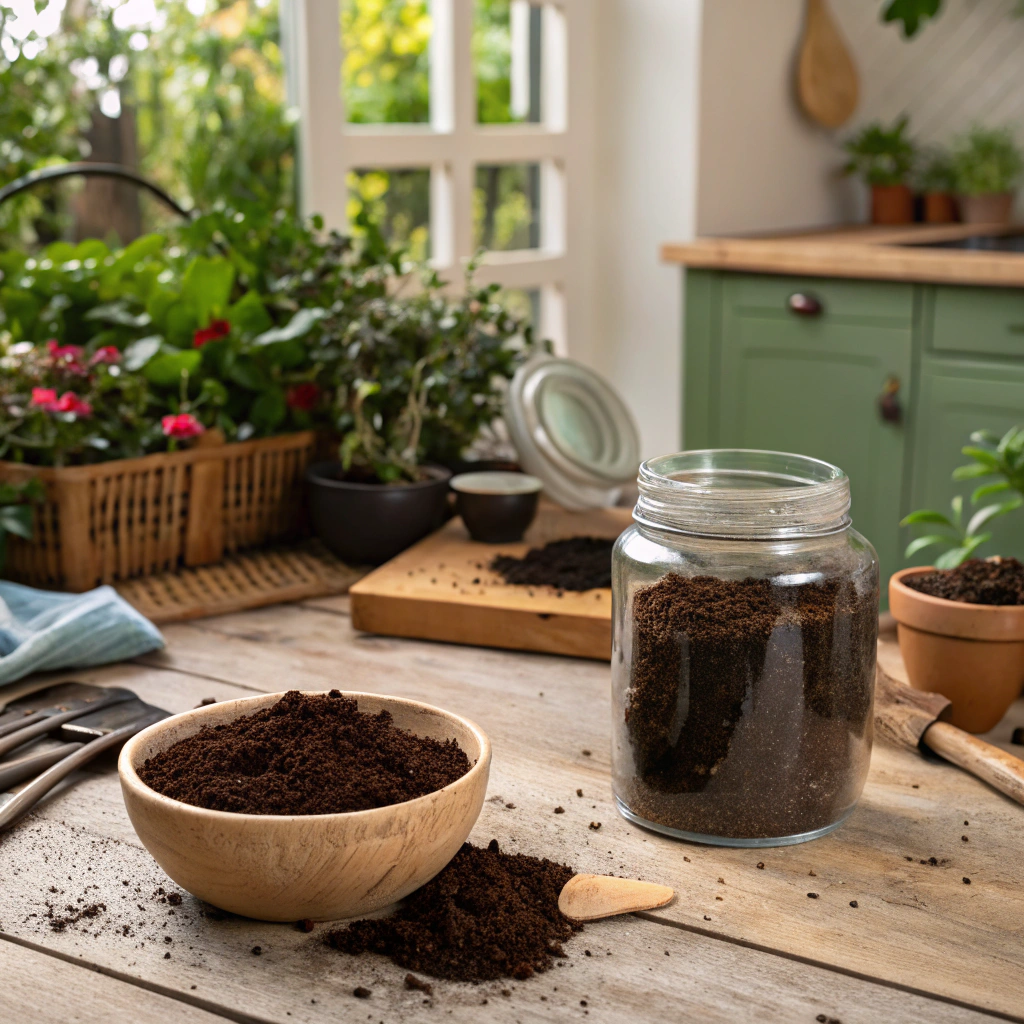Don’t Toss Those Coffee Grounds: The Ultimate Home and Garden Hack
If you’re dumping coffee grounds into the trash after your morning brew, stop right there. Throwing them away might just be the dumbest thing you can do. These gritty little leftovers are an invaluable resource, packed with potential for both your home and garden. From natural fertilizers to pest repellents and odor eliminators, coffee grounds are a multi-tasking marvel you’ll wish you’d appreciated sooner. Let’s break down why getting rid of them is a mistake—and how they can transform your daily life.
A Garden’s Best Friend
Coffee grounds are a powerhouse for anyone with a green thumb. Rich in potassium, they act as a natural fertilizer, delivering essential nutrients to plants and boosting their immunity against diseases. Toss them into your compost pile, and you’ve got a recipe for black gold—grounds break down quickly, enriching the mix with nitrogen and improving soil structure. But that’s not all: they attract earthworms, nature’s tiny tillers, which aerate the soil and enhance its fertility.
Got a slug or mole problem? Coffee grounds have you covered there, too. Their abrasive texture and caffeine content make them a natural pest repellent. Sprinkle them around your plants, and watch those slimy invaders and burrowing critters steer clear. It’s an eco-friendly alternative to chemical pesticides, and it’s already sitting in your kitchen.
Home Hacks You’ll Wish You Knew Sooner
The magic of coffee grounds doesn’t stop at the garden gate—they’re just as useful indoors. Ever notice how certain smells linger in your fridge or garbage can? Coffee grounds absorb odors like a sponge. Place a small bowl of them in the back of your refrigerator, and say goodbye to that funky cheese whiff. Want to take it up a notch? Mix in a few drops of essential oils—lavender, vanilla, or citrus—and you’ve got a homemade air freshener that beats anything store-bought.
But wait, there’s more. Got scratched-up wooden furniture? Rub damp coffee grounds into the marks, let them sit, and wipe them away—the dark pigments can mask those imperfections like a charm. Looking for a natural beauty boost? Work grounds into your hair to deepen dark tones, or use them as a hand scrub to soften rough skin. And here’s a laundry tip: add a handful to your wash with dark clothes to help maintain their rich color without harsh dyes. It’s like coffee grounds are the Swiss Army knife of household fixes.
Why Waste What Works?
Getting rid of coffee grounds is a mistake when you consider their sheer versatility. They’re free, they’re sustainable, and they’re already part of your routine—why not squeeze every last drop of usefulness out of them? In the garden, they nourish plants, repel pests, and enrich the soil. In the home, they tackle odors, spruce up furniture, and even double as a grooming aid. It’s hard to find something this practical that doesn’t cost a dime extra.
A Profitable Project Idea?
With all these benefits, coffee grounds might just be the seed of a brilliant side hustle. Imagine collecting used grounds from local cafes (they’re often happy to give them away), packaging them with simple instructions, and selling them as a home-and-garden kit. Market it to eco-conscious gardeners, DIY enthusiasts, or anyone looking to stretch their dollar. Add a twist—infuse some with essential oils for the home crowd—and you’ve got a product that’s cheap to make and easy to sell. #Profitable_Project_Ideas, indeed.
The Bottom Line
Coffee grounds are a hidden gem, offering a laundry list of benefits for next to no effort. They’re a natural fertilizer, a pest deterrent, an odor eliminator, and a household fix-it tool all rolled into one. So next time you brew a pot, don’t let those grounds hit the bin. Put them to work—and watch your home and garden thank you for it.
FAQs About Coffee Grounds
Q: Can I use coffee grounds on all plants?
A: Most plants love coffee grounds, especially acid-loving ones like roses, blueberries, and azaleas. However, use them sparingly on plants that prefer alkaline soil, like lavender or asparagus, as grounds can lower pH over time.
Q: Do coffee grounds really repel all pests?
A: They’re effective against soft-bodied pests like slugs and snails, and some burrowing critters like moles. However, they won’t deter every pest—think of them as a helper, not a cure-all.
Q: How much coffee grounds should I add to my compost?
A: Aim for a balance—grounds should make up no more than 20-25% of your compost pile. Too much can make it too acidic or slow decomposition.
Q: Will used coffee grounds stain my furniture or clothes?
A: They can if you’re not careful! For furniture fixes, use damp grounds and wipe thoroughly. In laundry, stick to dark fabrics to avoid any risk.
Q: Are fresh coffee grounds better than used ones?
A: Used grounds are ideal—they’ve got less caffeine (which can be too strong for some plants) and are already moist, making them easier to work with.
Tips for Using Coffee Grounds
- Dry Them Out: If you’re saving grounds for later, spread them on a tray to dry first. This prevents mold and makes storage a breeze.
- Mix with Soil: Don’t just dump grounds on top of your garden—blend them into the soil for even nutrient distribution.
- Test Small: Trying the hair or furniture trick? Start with a small patch to make sure you like the result.
- Boost Your Scrub: Combine grounds with a bit of coconut oil or sugar for an extra-luxurious hand or body scrub.
- Reuse Strategically: After deodorizing your fridge, repurpose those grounds in the garden—they’ll still work their magic.
- Avoid Overuse: A little goes a long way. Too many grounds can clump in soil or overwhelm small spaces with scent.
- Collect Smart: Keep a lidded container by your coffee maker to stash grounds daily—it’s an easy habit to build.

